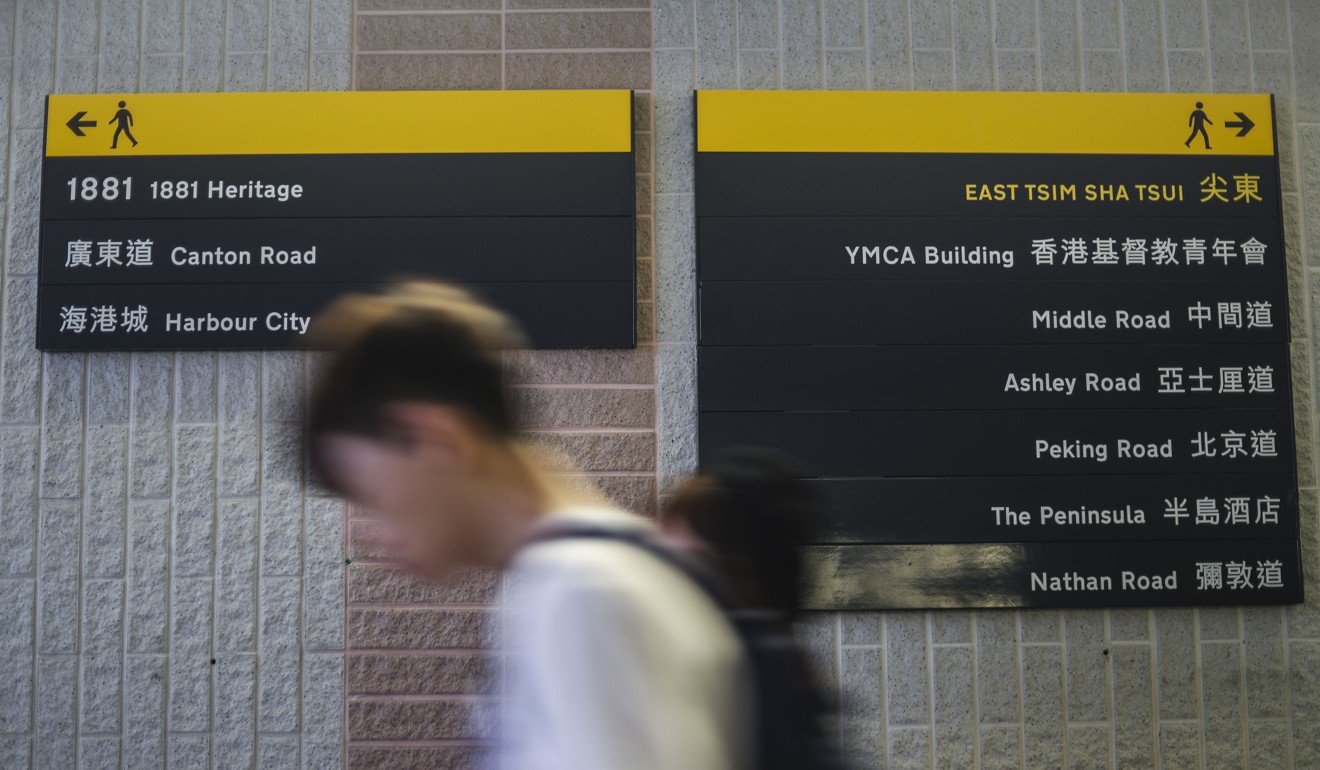
British-style street signs show walking distances in Tsim Sha Tsui as Hong Kong government teams up with Transport for London
Transport Department launches sign boards, fingerposts and wall-mounted signs in bid to get people walking more
British-style signs have returned to the streets of Hong Kong as the government, working with London’s official transport organisation, has launched new walking guidelines for pedestrians.
Five sign boards, two fingerposts and five wall-mounted signs were placed in Tsim Sha Tsui, along Nathan Road and Salisbury Road, as well as inside the pedestrian subway at Kowloon Park Drive.
Officials said the new design used simplified walking maps to show the pedestrian network in the district. Landmarks within a five and 15-minute walk were displayed.
The Transport Department launched the signs last Thursday as part of the government’s efforts to encourage more people to walk in the city. It took a year to formulate the project, which cost HK$3 million, working with Transport for London.

Locals and tourists on Wednesday said they liked the look of the new signs, though some thought they lacked a unique Hong Kong feel.
Valery Lyzhyn, who lives in the city, said he recognised the signs’ similarity with those in London. He thought they would prove more convenient for tourists and that the yellow and black colour scheme provided good contrast.
“I just stayed here for five minutes and there were already about 20 [people looking at it],” he said.
A tourist from mainland China, Simon Tan, said the new boards were clearer as distance information was provided.

The fresh look also attracted local architectural designer Jeffrey Ng who praised the signboards for being practical and having a good layout.
But he added they looked too similar to those in other countries, lacking Hong Kong’s own characteristics.
“Other than just directions, a road sign should give tourists the feeling they are in Hong Kong,” he said.

A spokeswoman from the Transport Department said it appointed the London body to design the signs because it was the first one in Britain, which had used this kind of direction mapping system. Other cities, including New York and Sydney, also adopted the design, she added.
She said if the results of the pilot scheme were positive after a three-year trial period, the government might expand the new design to other Hong Kong districts.

